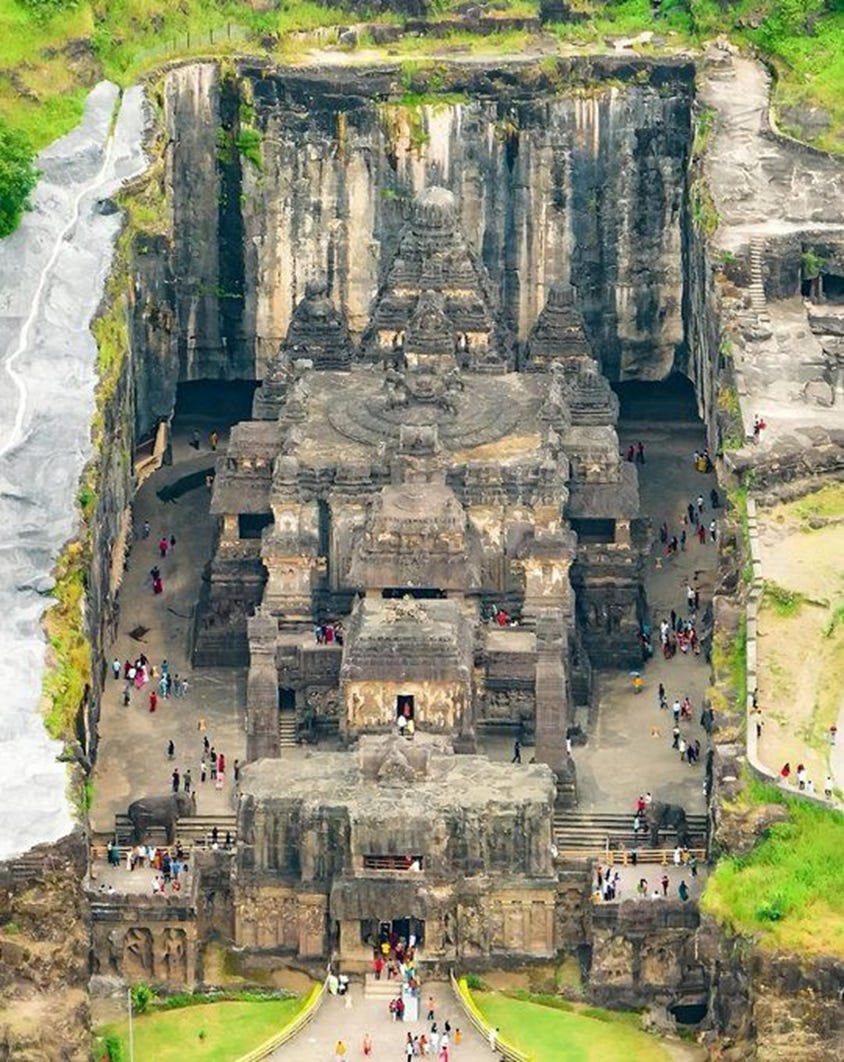Chapter 3: The Master Architect
In the weeks following the king’s proclamation, word spread like monsoon fire across the land: the mountain would be chiseled, not quarried; the temple would be born, not built. Most dismissed it as a royal whim, a metaphor perhaps, or the exaggerated ambition of a ruler in pursuit of glory. But those close to the court knew: the king’s eyes had changed. He had seen something.
And so the summons was sent—not for the boldest warrior or the wisest priest, but for the finest sthapati, a master of sacred architecture. His name was Revanta.
Revanta had no fixed home. He was a wanderer, a man of earth, geometry, ink, and intuition. Stories of his works trailed him like sandalwood smoke: temples in remote forests that aligned perfectly with solstices, palaces where every echo was deliberate, and statues that seemed to breathe. He was said to speak the language of stone.
It took weeks to find him—deep in the Vindhya hills, where he had taken a vow of silence and was working on a meditation shrine aligned to the star Agastya muni, one of the sapta rishis of Shiva. When the royal messenger finally found him and placed the seal of Krishna I in his hands, Revanta read the call in silence, eyes narrowing not in pride—but in wonder.
He broke his vow with a single whisper:
“This is not a commission. This is a test of the soul.”
Revanta arrived at the site before the court entourage. The mountain loomed before him—dark, unbroken, ancient. He placed his ear to its skin, listening not for fault lines, but for echoes. For resonance. He walked its perimeter barefoot, sketching invisible lines in the air, murmuring calculations not in numbers, but in proportions: 1 to √2. Golden ratio. Eight directions. Vastu Purusha Mandala.
He did not ask where the king wanted the sanctum to be.
He asked where the deity already was.
When finally brought before the court, Revanta laid out no blueprints. Instead, he unrolled a long palm-leaf manuscript inscribed with what appeared to be poetry.
The king frowned. “Where is the plan?”
Revanta bowed, eyes alight with a strange fervor.
“The plan is not to build, Maharaj. The plan is to uncover. The temple is already inside the mountain. I will merely release it.”
Silence again. The court was getting used to this silence, the kind that comes when a dream dares to become flesh.
And so, the work began.
No stone was hauled. No foundations were laid. Instead, chisels met the mountain’s crown, like scalpels on divine flesh. The carving would proceed from top to bottom, layer by layer, like peeling away the illusion of form to reveal the soul within.
Revanta did not allow mistakes. One miscalculation, and the entire structure would collapse into itself. Every line, every chamber, every column had to be imagined from above, in reverse, in perfect symmetry. No scaffold could be used. No second chances given.
It was architecture not as construction but as invocation.
He trained hundreds of artisans, not just in skill but in silence—teaching them to listen for the spirit within the stone. “Strike not to shape,” he said, “but to reveal. Let the chisel fall only when the breath of the god within aligns with your own.”
And slowly, beneath the relentless sun and the watchful stars, Kailasa began to emerge—like a secret long buried, now whispering its name into the wind.





“Strike not to shape,” he said, “but to reveal. Let the chisel fall only when the breath of the god within aligns with your own.”
☝☝ There's a life lesson in there.